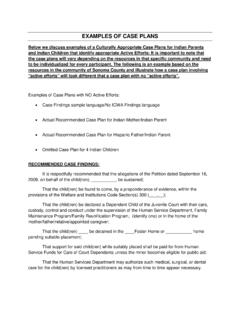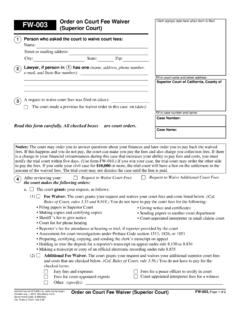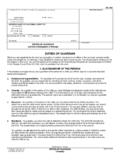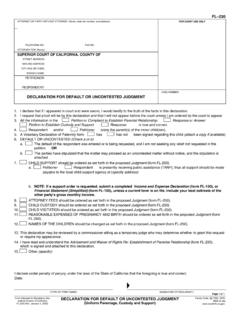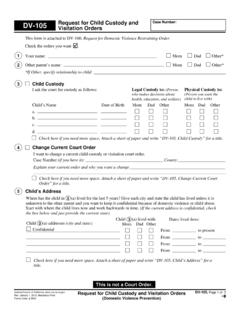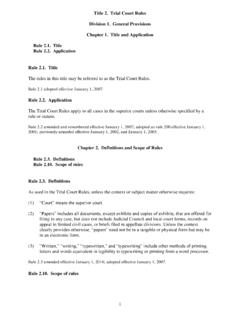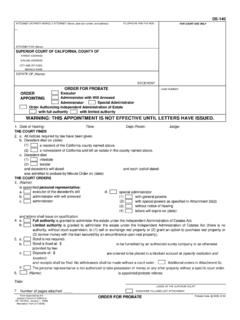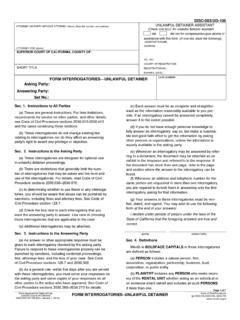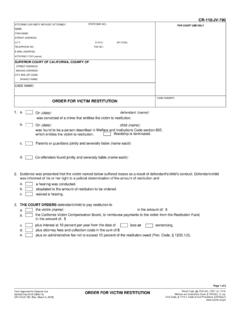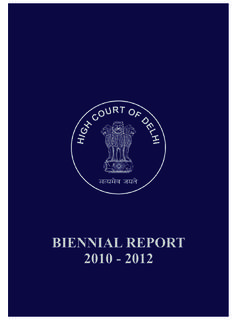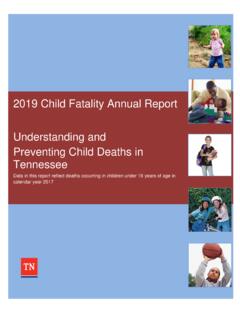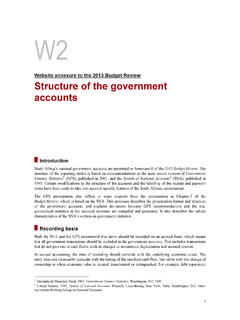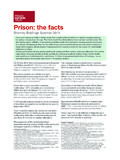Transcription of Resource Assessment Study - California Courts - Home
1 Resource Assessment Study Page 1 of 3. FACT SHEET. JUDICIAL COUNCIL. OF California April 2015. 455 Golden Gate Avenue San Francisco, CA. 94102-3688 Resource Assessment Study Tel 415-865-4200. TDD 415-865-4272. Fax 415-865-4205. The Resource Assessment Study (RAS) model is used to estimate the number of staff needed to handle the volume of filings coming before the Courts . The estimates are updated annually with new filings data. The staff time Study that provides the underlying data for updating the RAS model takes place every five years. The Study is conducted by the Office of court Research (OCR), with oversight and guidance from the Workload Assessment Advisory Committee (WAAC).
2 Since the RAS model is used as the basis for the Workload-based Allocation and Funding Methodology, WAAC and OCR work in close collaboration with the Trial court Budget Advisory Committee and the Judicial Council Finance office. The Judicial Council first approved the RAS methodology in 2005, with a provision to make ongoing technical adjustments to the model as data become available. Why are uniform measures of staff workload needed? Prior to state funding of the trial Courts , statewide resources and their relationship to how individual Courts were staffed and funded were not at issue. With the bulk of trial court funding coming from county governments, it was possible for one court to receive additional funding without having any implications for the amount of funding available to another court .
3 The advent of state funding made it necessary for the California judiciary to begin evaluating its priorities as a branch. The Lockyer-Isenberg Trial court Funding Act of 1997 points out that state funding is necessary to provide uniform standards and procedures, economies of scale and structural efficiency and simplification.. Achieving these goals, however, involves making difficult choices regarding scarce resources. In order to assist branch leaders in documenting the Resource needs of the Courts , OCR was directed to develop measures of workload that provide a single yardstick against which all trial Courts may be evaluated. The benefits of establishing uniform measures of workload go beyond the allocation of funding among Courts .
4 Using uniform measures of workload can create a more Resource Assessment Study Page 2 of 3. predictable and transparent fiscal environment. With a workload model in place, court leadership are aware of what the formulas will be for evaluating Resource needs and can plan accordingly. Furthermore, when workload studies are conducted on a regular basis, they can be a tool for assessing changes in the nature and extent of staff workload whether due to new legislation or rules of court , changes in business process, or the implementation of new programs and services. How does the RAS model estimate workload? The staff workload Study , which provides the underlying data for the RAS model, involves surveying staff in a sample of Courts about the tasks they are performing, reported according to case type, at various points in time during a designated sample period.
5 Taken together, these data points create a composite picture of case processing work in the Courts and allow for an estimation of the number of minutes required to process a filing of each casetype, from initial filing through post- disposition activity. Time studies invariably measure actual Resource levels. As a result, the initial estimates of time per filing must be evaluated carefully to avoid implying that actual Resource levels are appropriate. In order to address these concerns and to ensure that the final caseweights represent efficient and effective case processing, a quality adjustment phase is incorporated into the Study . This phase consists of (1) surveying Courts on their use of contractors, outside vendors, or volunteers to perform case processing work and adding the time they contribute to the workload estimates, (2).
6 Conducting site visits to Study Courts to review and validate the data and to understand the areas where Courts need additional time to more satisfactorily perform their work, and (3) conducting Delphi sessions with court subject matter experts to review and recommend adjustments to the caseweights. The number of minutes per filing, or caseweight, is multiplied by three-year average filings to arrive at the total time needed to process cases of all types. In turn, that total is divided by the staff-year value the total staff time available for work activities, taking into account holidays, vacation, sick leave, etc. to come up with the number of full-time equivalent staff needed to handle the caseload.
7 For purposes of the budget allocation process, the model also has to be augmented to incorporate the full range of staff in the trial Courts not just those directly involved in case processing including supervisors, managers, and administrative staff. These staff are incorporated into the model using positions (Schedule 7A) data. Resource Assessment Study Page 3 of 3. How is the RAS model related to funding allocation? Due to ongoing concerns regarding the equity of funding among Courts , the Judicial Council, in Spring 2013, approved the Workload-based Allocation and Funding Methodology (WAFM), an approach intended to move the branch toward a model based more on workload and less on historical funding levels (prior to state trial court funding).
8 The full-time equivalent staff need produced by RAS is translated into dollars using average salary costs, adjusting for cost-of-labor differentials using Bureau of Labor Statistics data, and including actual retirement and health care costs. Non- personnel costs and other elements are factored into WAFM to project the total funding need for each court . Contact: Additional resources: Judicial Council report on updated RAS parameters, February 2013, Judicial Council report recommending WAFM, Workload Assessment Advisory Committee.

